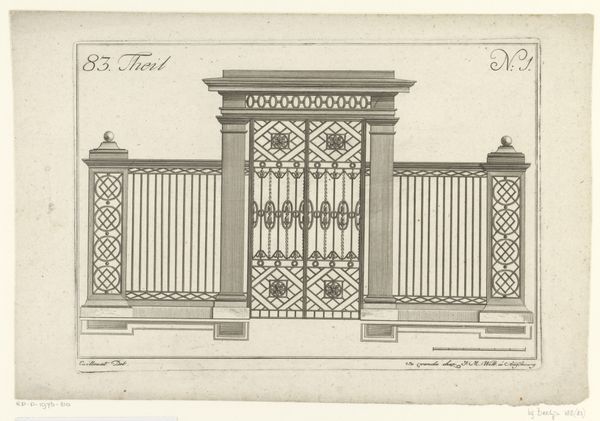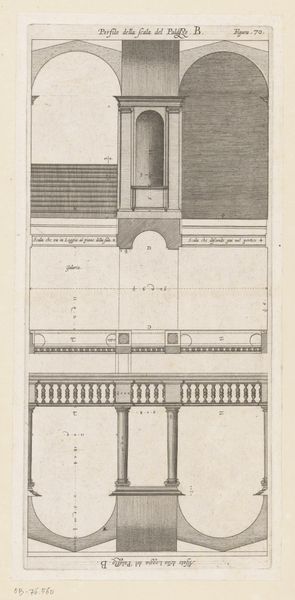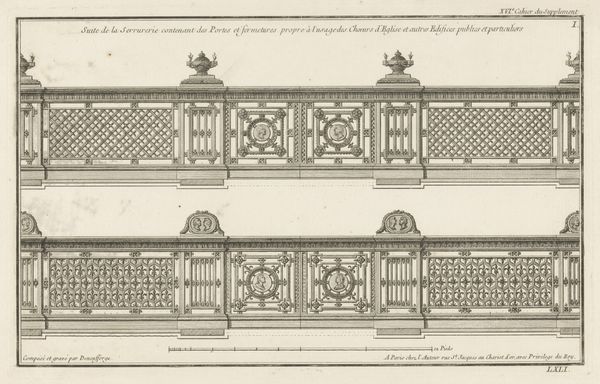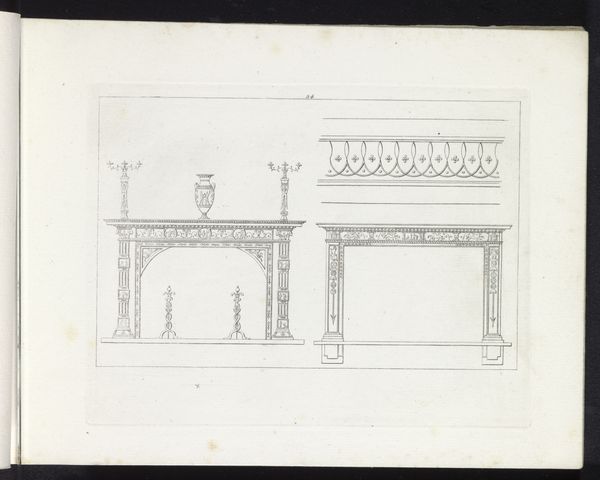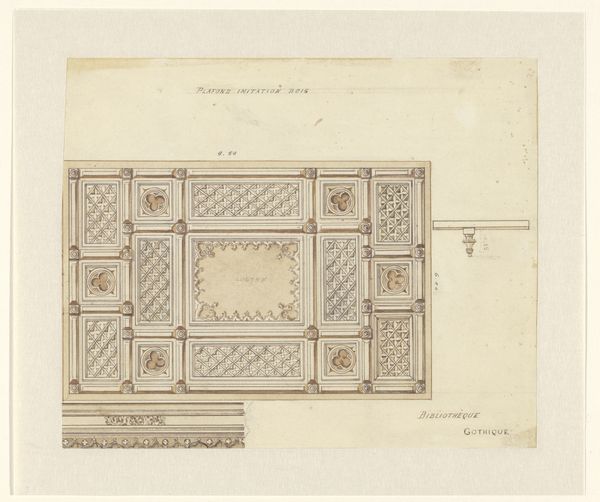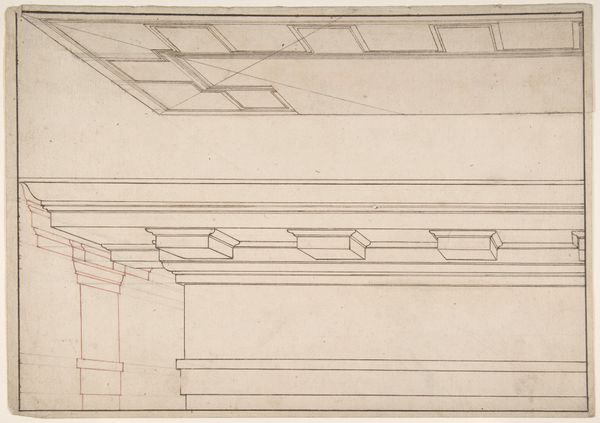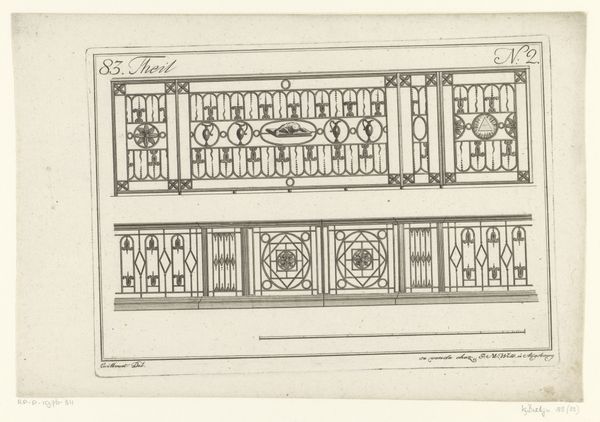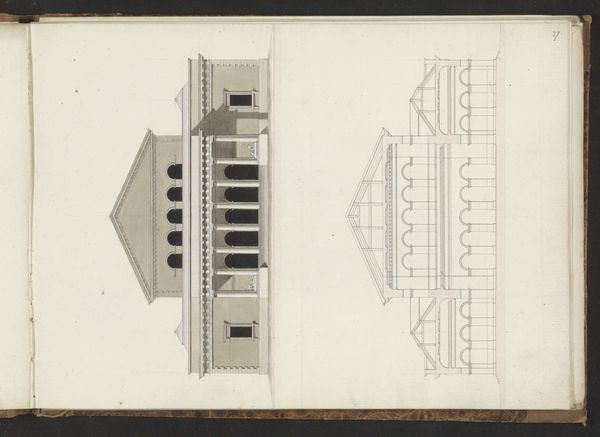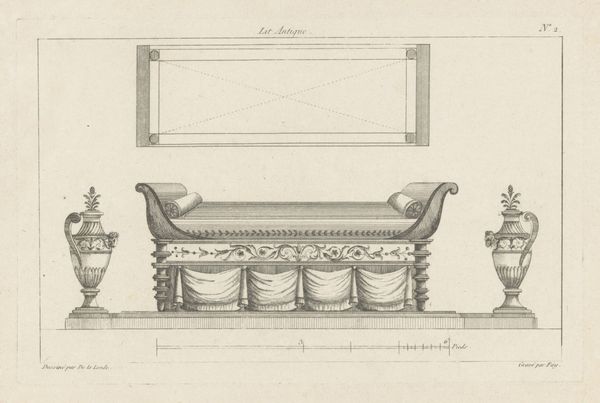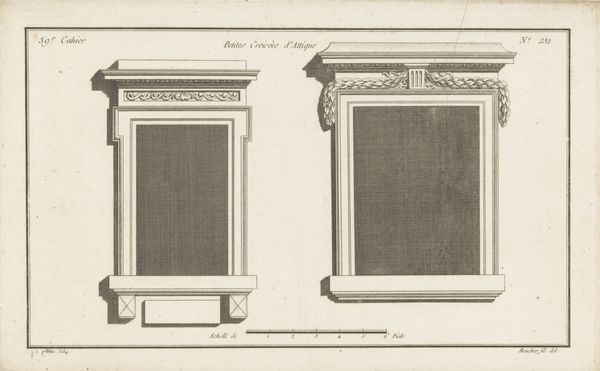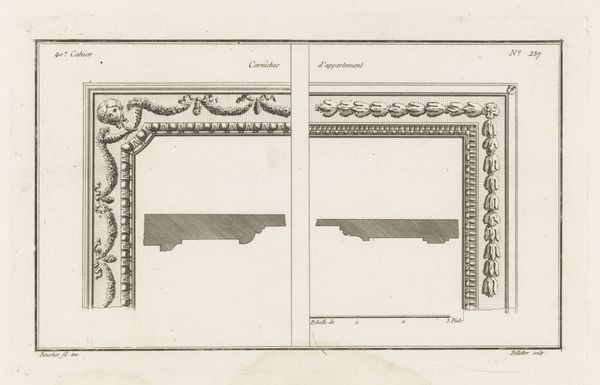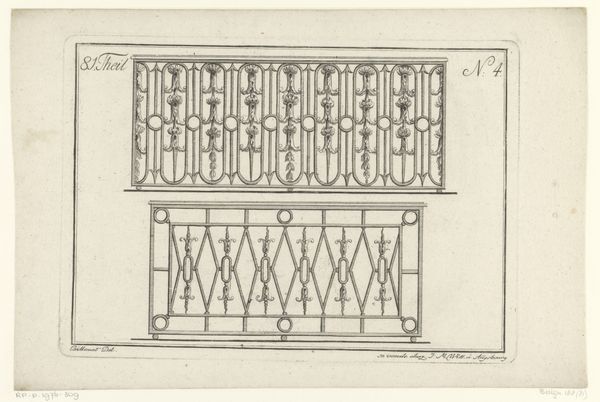
drawing, etching, paper, architecture
#
drawing
#
neoclacissism
#
etching
#
etching
#
paper
#
geometric
#
architectural section drawing
#
architectural drawing
#
architecture
Dimensions: height 191 mm, width 293 mm
Copyright: Rijks Museum: Open Domain
Curator: Here at the Rijksmuseum, we have an intriguing etching called "Bureau met lades," or "Desk with Drawers," made between 1780 and 1807 by Elias Strasser. It's a highly detailed Neoclassical design, very architectural. What's your take on it? Editor: It feels so restrained. There's a mathematical precision to the rendering, but almost sterile in its lack of ornament. I wonder what it tells us about the role of functionality in that era and about the status the patron might have sought to signal through the display of geometric, yet sober, order. Curator: That's perceptive. This piece emerged during the rise of Neoclassicism, where rationality and order were highly valued. We have this artist, Strasser, creating an etching – meant to disseminate designs widely - of a functional desk meant to facilitate trade. The rigid composition, those repetitive vertical lines in the panels - it screams industrial capitalism coming into its own. Editor: Right. And the drawers... all those little compartments hint at a new compartmentalization of knowledge, or maybe of societal roles as well, which ultimately affected how people moved about in their immediate environments. Where did Strasser fit within this? Curator: As an etcher and draughtsman, Strasser contributed to disseminating architectural and decorative designs, shaping the visual language of his time. He occupied this liminal space as facilitator. The architectural detail gives these familiar household items elevated status within the aesthetic realm. It mirrors, on a much smaller scale, those discussions about art education being available for a wide array of practitioners within different strata. Editor: A facilitator in the sense of not just the art, but how that impacts access! Knowing that the Rijksmuseum holds this architectural study and not the finished furniture brings up questions about class, labor, privilege, the canon! And also how art and institutions interplay as active agents and arbiters! Thanks! This has really given me food for thought! Curator: Indeed. Thinking about "Bureau met lades" helps us recognize the artistic agency of these objects and how designs reflected, and also reinforced, contemporary values and hierarchies.
Comments
No comments
Be the first to comment and join the conversation on the ultimate creative platform.


